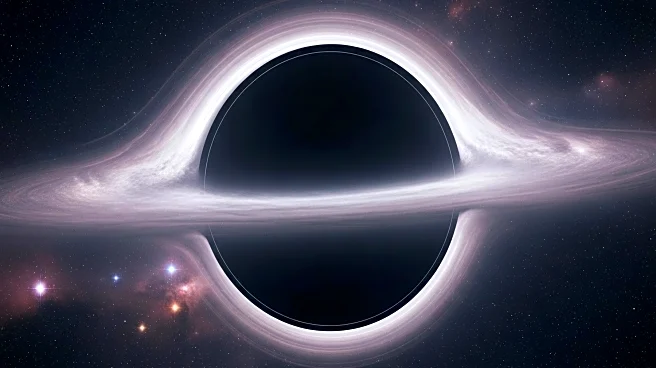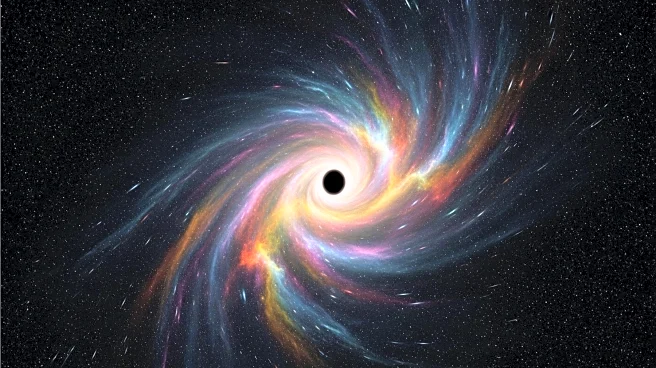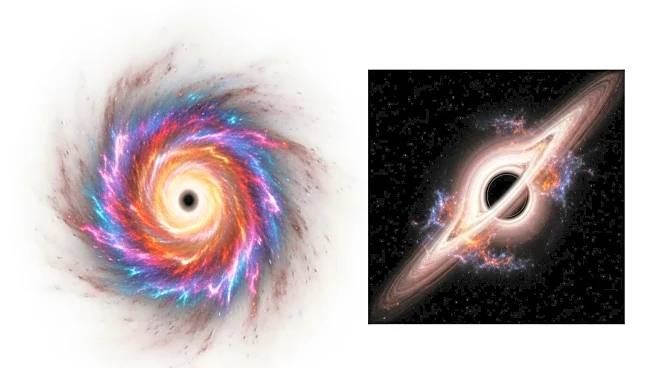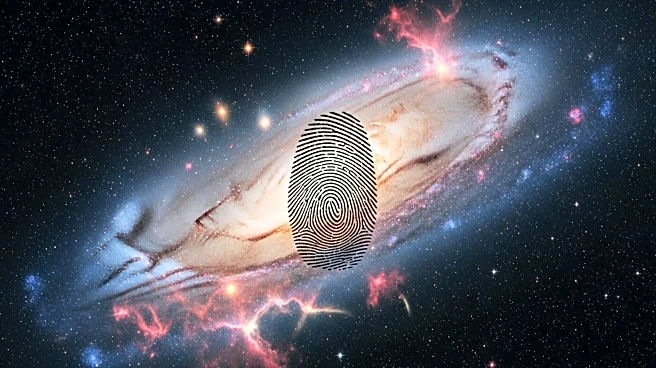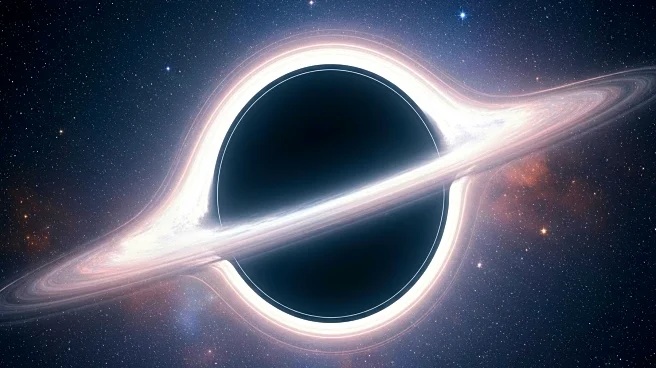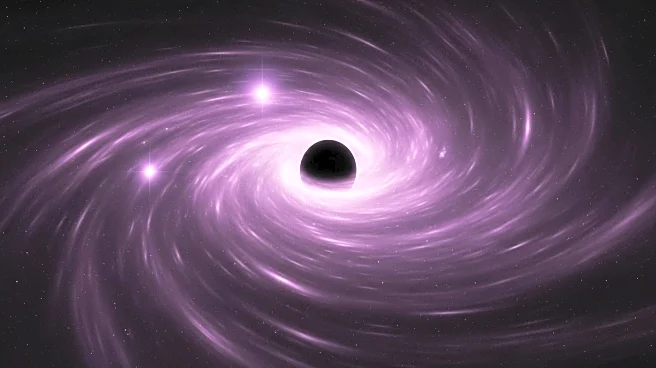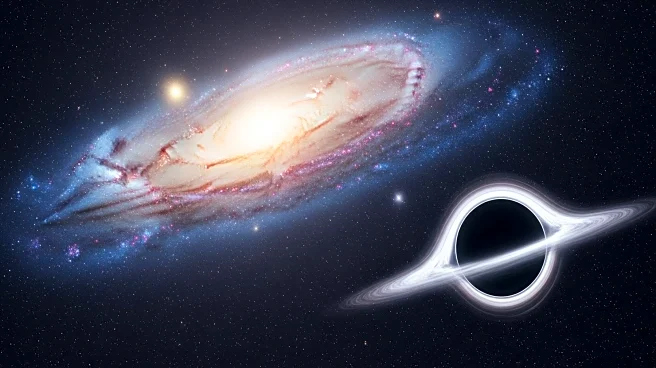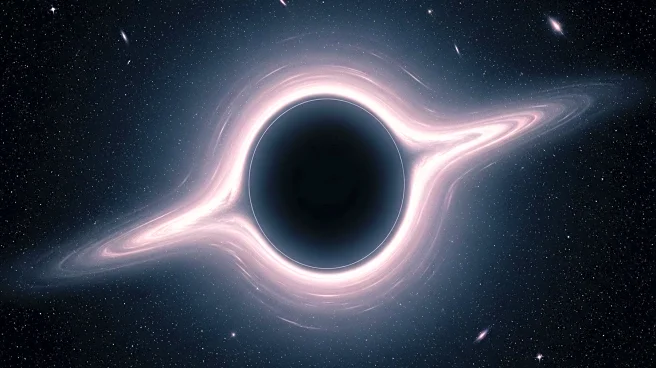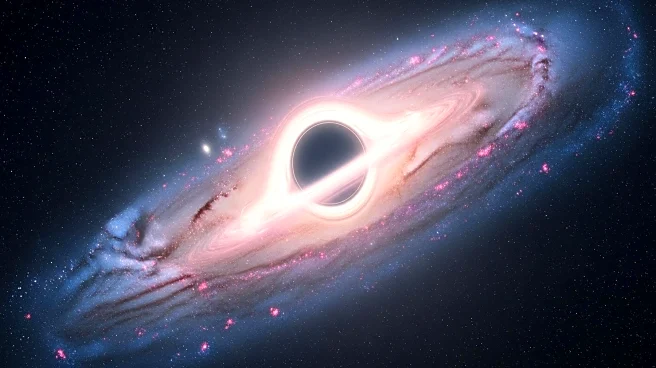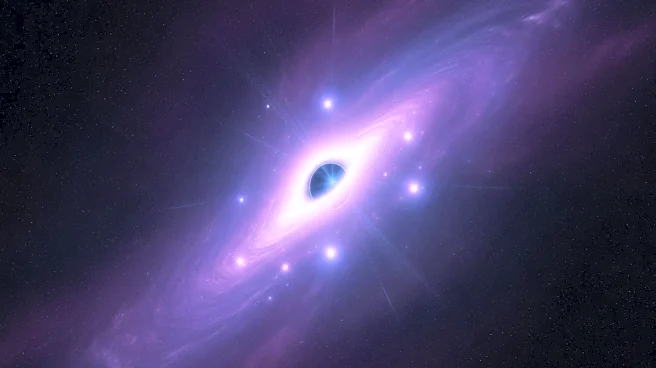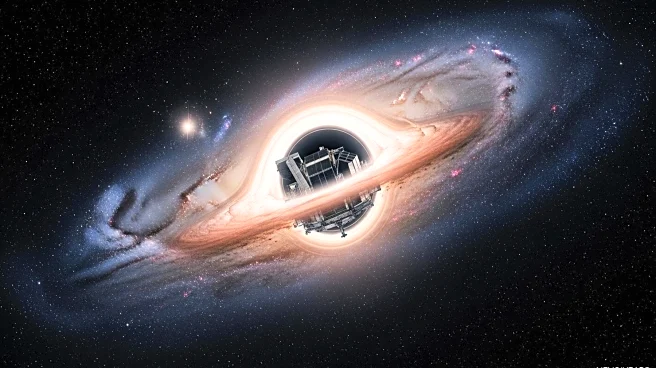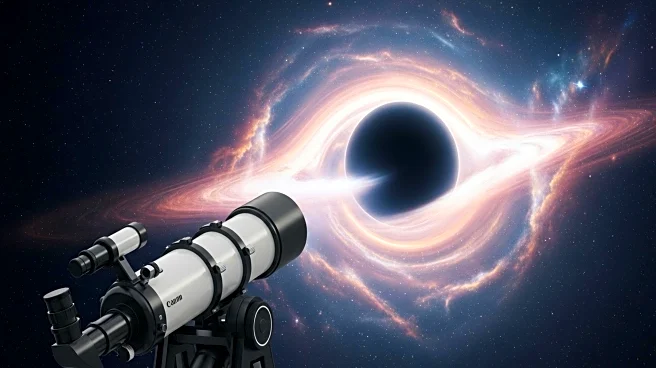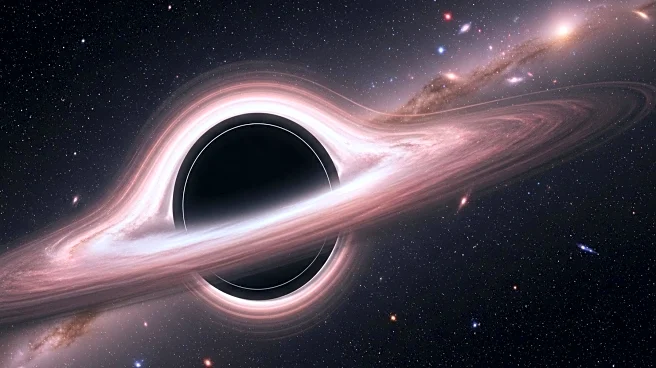What is the story about?
What's Happening?
Astronomers have discovered a supermassive black hole, RACS J0320-35, growing at more than twice the theoretical limit. Using NASA's Chandra X-ray Observatory, researchers observed the black hole, which was born 920 million years after the Big Bang, swelling to roughly 1 billion times the mass of the sun. The black hole's growth rate exceeds the Eddington limit, a theoretical ceiling for black hole growth based on radiation pressure and gravitational pull. This discovery challenges existing cosmological models and deepens the mystery of how ancient black holes grew so rapidly.
Why It's Important?
The discovery of a super-Eddington black hole provides new insights into black hole growth and the early universe's dynamics. Understanding how black holes can surpass theoretical growth limits could lead to breakthroughs in cosmology and astrophysics. The research highlights the importance of advanced observational techniques and the need to refine existing models. Insights gained from this study could influence future research on black holes and their role in cosmic evolution.
What's Next?
Further research into RACS J0320-35 and other super-Eddington black holes will help scientists unlock the mysteries of the universe's earliest black holes. The study's findings may lead to new theories about black hole formation and growth, potentially influencing future cosmological models.
Beyond the Headlines
The discovery challenges existing models and encourages the development of new theories to explain black hole behavior. The research underscores the importance of advanced observational techniques and international collaboration in astrophysics. Insights gained from this study could influence future research on black holes and their impact on surrounding matter.
AI Generated Content
Do you find this article useful?
